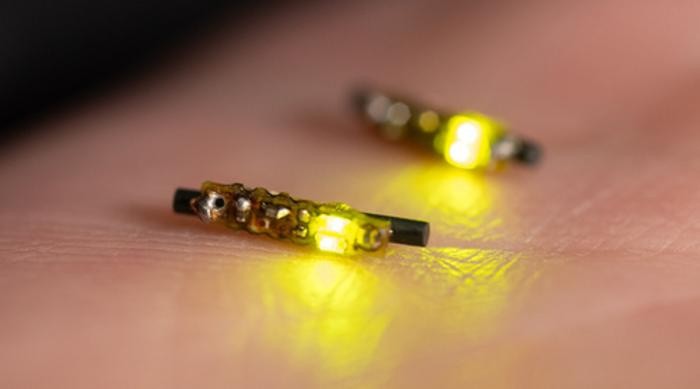Researchers at the University of Notre Dame have introduced a new approach to tackling deep-seated cancers with an innovative implantable LED device.
When combined with a light-sensitive dye, this method targets cancer cells and stimulates the immune system to attack the malignancies. This new technology could address cancers situated deep within the body, beyond the reach of conventional light therapies.

An Implantable LED Device for Targeting Cancers
Associate professor of electrical engineering Thomas O'Sullivan, who co-authored the paper, explained that certain colors of light penetrate tissue deeper than others. Greenlight, which does not penetrate as deeply, has been found to produce a strong response against cancer cells.
Dye-containing light-absorbing molecules must first be administered for the light to destroy the cancer cells. When the device is activated, the dye converts the light into energy.
This energy turns the oxygen within the cells toxic, effectively causing the cancer cells to self-destruct. This approach leverages the cells' own oxygen, leading to a particularly effective form of cell death.
The research team observed an intriguing response from the treated cells. Graduate students Hailey Sanders and SungHoon Rho noted that the cells were swelling, a hallmark of pyroptosis - a type of cell death that effectively triggers the immune system.
Bradley Smith, the Emil T. Hofman Professor of Science and co-author of the paper, stated that their goal is to induce a small amount of pyroptotic cell death to stimulate the immune system to attack the cancer.
Read Also : 'Thin as Film' OLEDs Are the Future of Smartphone Display and Neurological Disease Treatment
Future Studies for the Implantable LED Device
According to the research team, future studies will involve using the wireless device in mice to determine if the immune response initiated in one tumor can lead to the immune system targeting and attacking other tumors independently.
The LED device, the size of a grain of rice, can be directly injected into a tumor and activated remotely by an external antenna. This approach aims to deliver treatment and monitor the tumor's response, allowing adjustments to signal strength and timing as needed.
The results from these studies suggest a future path towards a wireless, implanted LED-based device capable of triggering photodynamic immunogenic cell death in deep-seated cancerous tissue. The approach could pave the way for new cancer treatments that are currently difficult to reach and treat effectively.
By combining engineering and medical expertise, the researchers at Notre Dame aim to develop a novel treatment that could revolutionize how deep-seated cancers are addressed. The study's findings were published in the journal Photodiagnosis and Photodynamic Therapy.
Read also: Prostate Cancer Prevention: Study Reveals Significant Risk Reduction Through Fitness Improvement

ⓒ 2026 TECHTIMES.com All rights reserved. Do not reproduce without permission.




